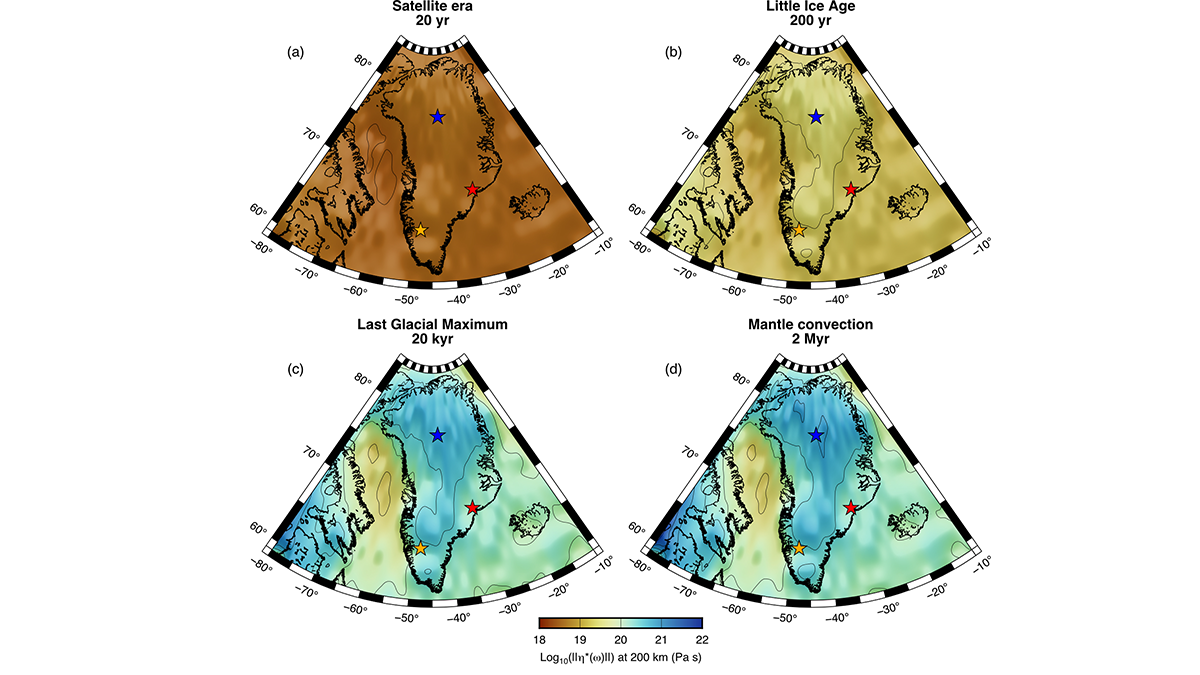Editors’ Highlights are summaries of recent papers by AGU’s journal editors.
Source: AGU Advances
Ice sheet dynamics, such as in Greenland, depend on the underlying solid earth response, in particular the flow strength of the asthenosphere, its viscosity. While it has long been recognized that viscosity can depend on loading timescales, a better characterization of this behavior is needed because a range of constraints have led to seemingly inconsistent descriptions.
Paxman et al. [2023] apply a new inversion framework and present a 4D inference of mantle’s thermo-mechanical, from decadal to million year timescales. While transient viscosity models are in widespread use, including for post-seismic studies, this new approach has the potential to jointly represent geodetic, seismological, and geodynamic views of the mantle more comprehensively. Better parsing spatio-temporal uncertainties on viscosity and augmenting the set of constraints in future work has the potential to advance our understanding of the future response of the lithosphere-asthenosphere system.
Citation: Paxman, G. J. G., Lau, H. C. P., Austermann, J., Holtzman, B. K., & Havlin, C. (2023). Inference of the timescale-dependent apparent viscosity structure in the upper mantle beneath Greenland. AGU Advances, 4, e2022AV000751. https://doi.org/10.1029/2022AV000751
—Thorsten Becker, Editor, AGU Advances

